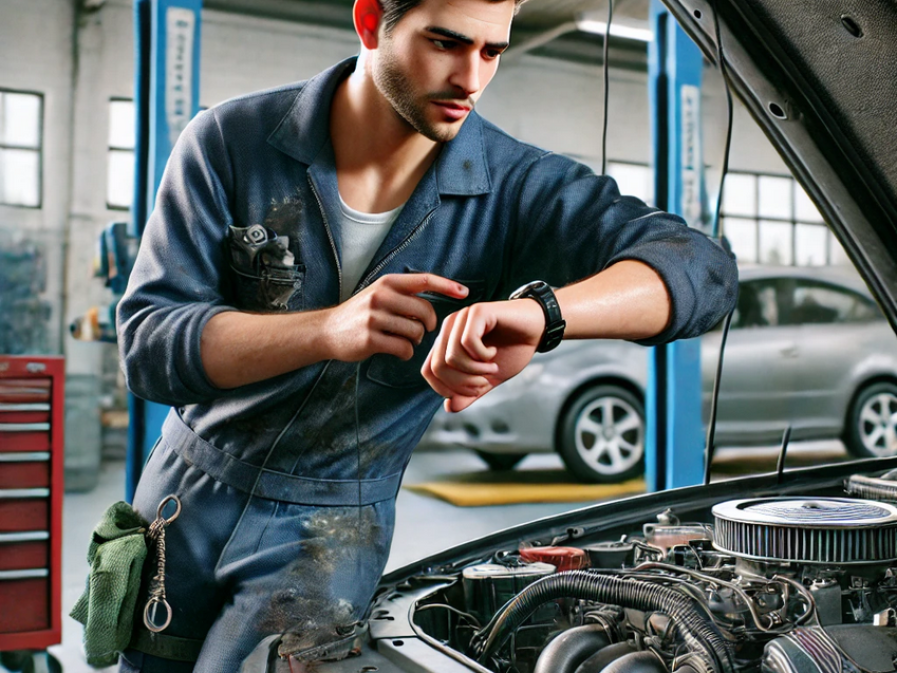Arranging the installation of the gas system in the car
If you decide to change the method of powering the drive unit to LPG, you should make an appointment for the installation of the car gas system in one of the numerous workshops dealing with the installation of gas supply systems in cars.
This requires allocating an appropriate amount of time for such assembly. So how long does it take to install a car gas system?
It depends. From what?
The time needed to install a car gas system is influenced by many factors that are related to the structure of the vehicle itself and the solutions used in it.
The influence of the type of petrol system on the installation time of LPG
Theoretically, the easiest to install are automotive gas installations in vehicles equipped with indirect petrol injection engines, which use universal LPG installations that are used in all this type of drive units.
It is slightly more difficult to install the gas system in engines with direct injection (at least this is the prevailing opinion, it is often wrong). Dedicated gas installations are used for this type of drive units and are supplied with detailed installation instructions, which make their installation much easier.
The number of engine cylinders and the installation time of the gas installation
The installation time of the gas installation also depends on the number of cylinders of the engine that is converted to LPG. A larger number of cylinders means a larger number of injectors, which require additional time to install. And the range of engines used in cars is huge, ranging from 2-cylinder drive units, through 3- and 4-cylinder engines, very popular in smaller cars. You can still find 6-cylinder engines in cars, slightly less often 5-cylinder ones (in used cars). Top-shelf cars use 8-cylinder and 12-cylinder engines, in which the installation of gaseous installations is very time-consuming.
The influence of the engine structural system on the installation time of the LPG installation
The structure of the engine also influences the time needed to install the gas system. Depending on whether it is an in-line drive unit, a V-engine or a boxer (push-pull drive unit), the installation time of the LPG installation will be different.
Theoretically, in-line engines are the easiest to install gas installations. V-engines are much more complicated and often require the disassembly of certain elements for the installation of the LPG system. The situation is similar with boxer engines, in which access to individual engine components (e.g. the intake system) is very difficult.
The influence of the location of the drive unit on the gas installation time
Drive units can be mounted longitudinally (classic drive system) or transversely (currently a much more common system). There is no rule regarding the impact of engine installation on the installation time of the LPG installation, as it may be difficult in both cases. There are cars with 5- or 6-cylinder engines placed transversely, also in a V-shaped arrangement. The reduced amount of space in engine compartments in such cases requires longer time to arrange and install LPG system components.
LPG tank and its impact on the time of installing gas in a car
Tanks (toroidal - usually installed in place of the spare wheel, and cylindrical) can be installed both in the trunk and under the car, which may also, to some extent, affect the installation time of the gas system.
Sometimes the installation of an LPG tank requires some modifications (trunk floor, change of exhaust system arrangement), which directly translates into an extension of the installation time of the LPG installation and thus increases the cost.
In general, it can be assumed that the time needed to install a gas system in a car ranges from one to several days. In the simplest cars, gas is installed in one day. More complicated cars that require more work during installation or calibration of the gas supply system must stay in the workshop a little longer, usually for two days, which is enough to perform this service properly. However, there are cars that are even more labor-intensive and require leaving the installation and servicing of car gas installations in the workshop for several days.

